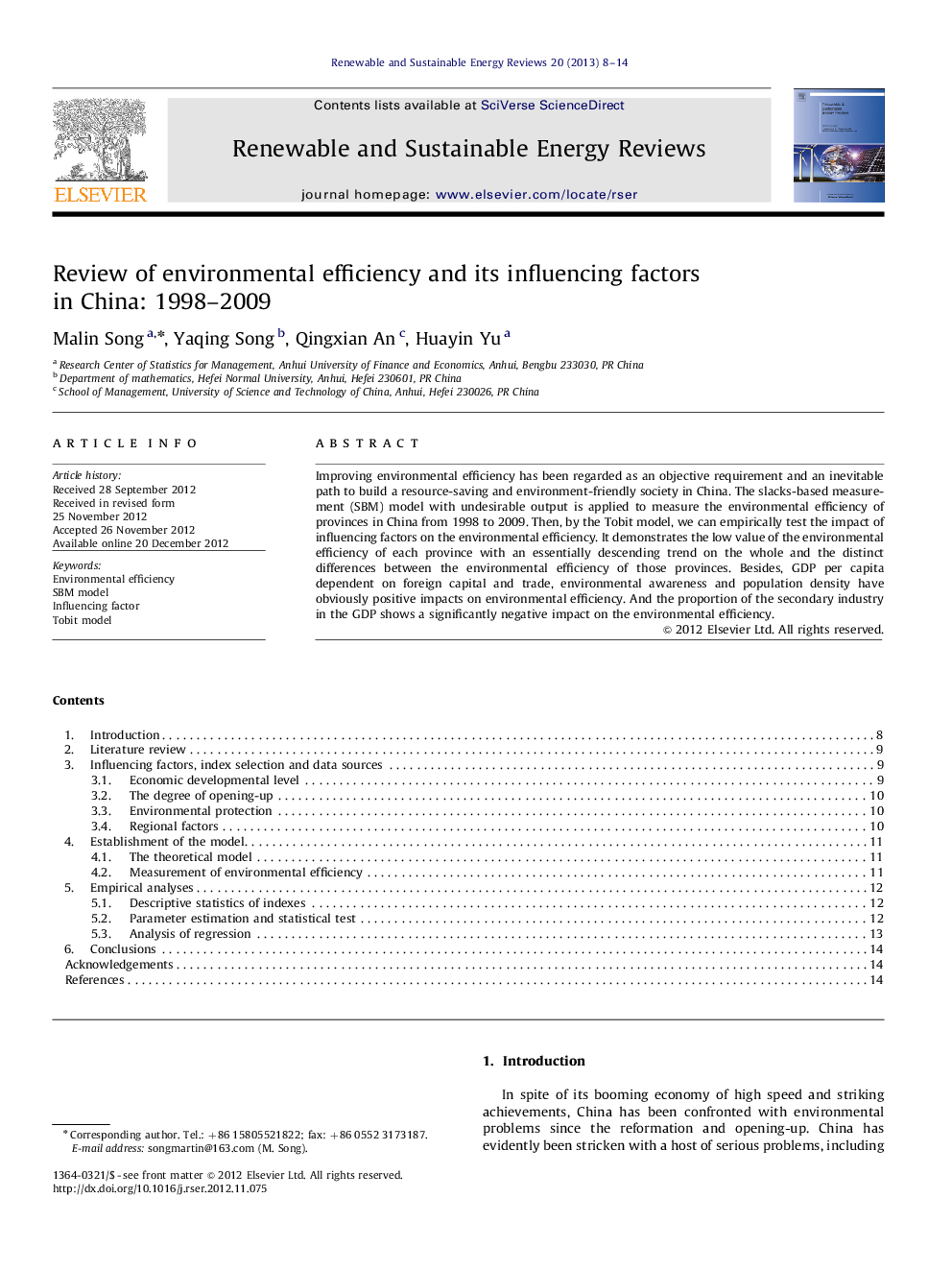| Article ID | Journal | Published Year | Pages | File Type |
|---|---|---|---|---|
| 8122114 | Renewable and Sustainable Energy Reviews | 2013 | 7 Pages |
Abstract
Improving environmental efficiency has been regarded as an objective requirement and an inevitable path to build a resource-saving and environment-friendly society in China. The slacks-based measurement (SBM) model with undesirable output is applied to measure the environmental efficiency of provinces in China from 1998 to 2009. Then, by the Tobit model, we can empirically test the impact of influencing factors on the environmental efficiency. It demonstrates the low value of the environmental efficiency of each province with an essentially descending trend on the whole and the distinct differences between the environmental efficiency of those provinces. Besides, GDP per capita dependent on foreign capital and trade, environmental awareness and population density have obviously positive impacts on environmental efficiency. And the proportion of the secondary industry in the GDP shows a significantly negative impact on the environmental efficiency.
Related Topics
Physical Sciences and Engineering
Energy
Renewable Energy, Sustainability and the Environment
Authors
Malin Song, Yaqing Song, Qingxian An, Huayin Yu,
